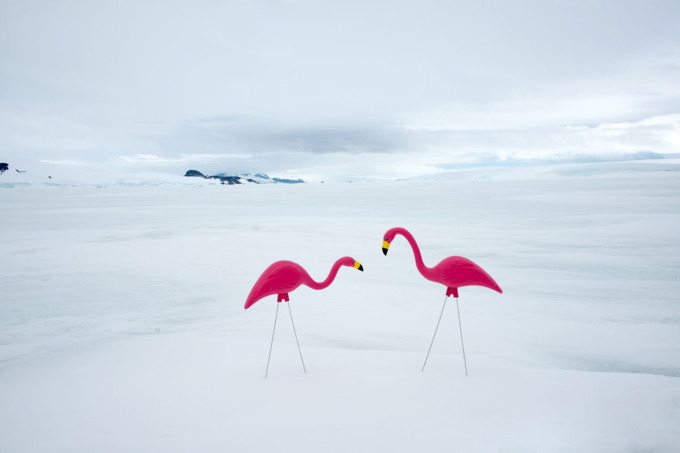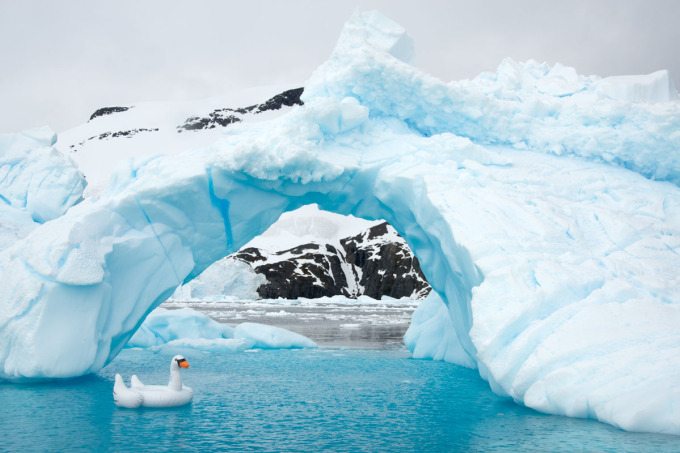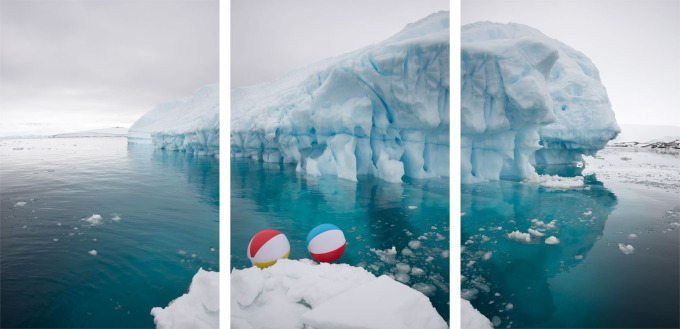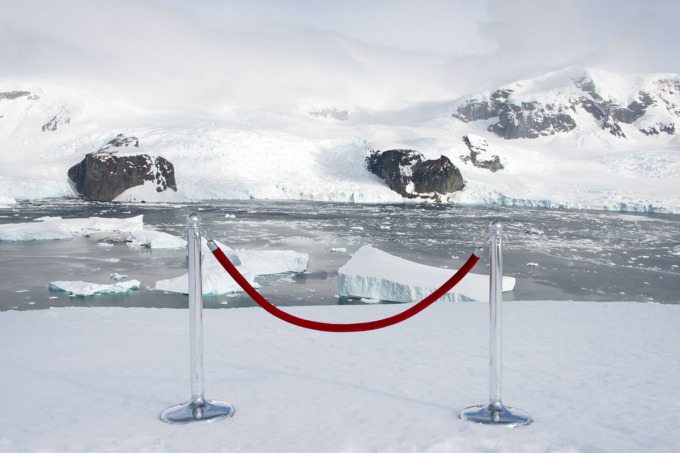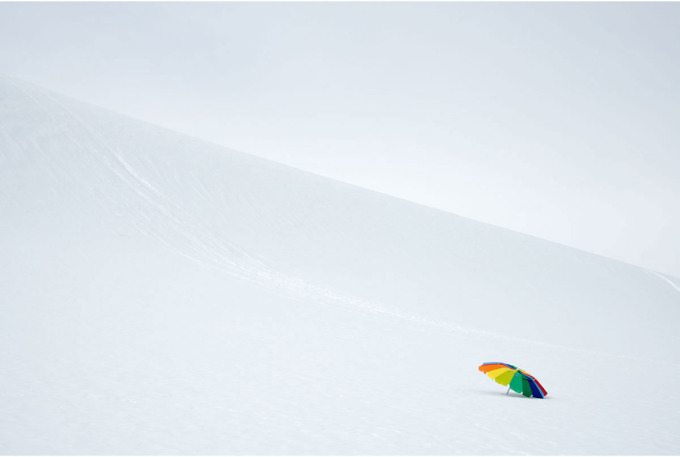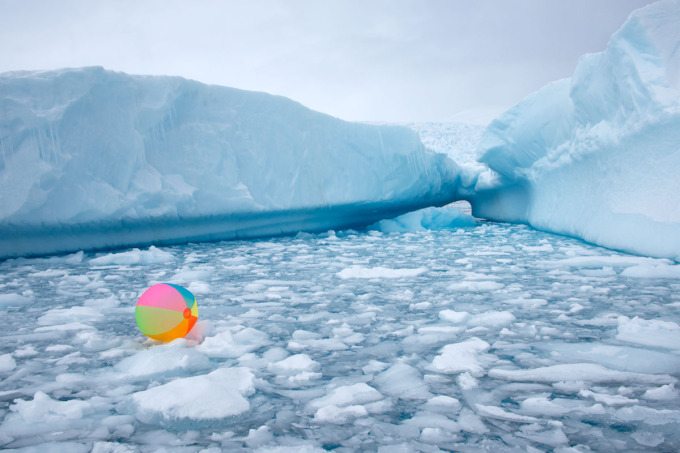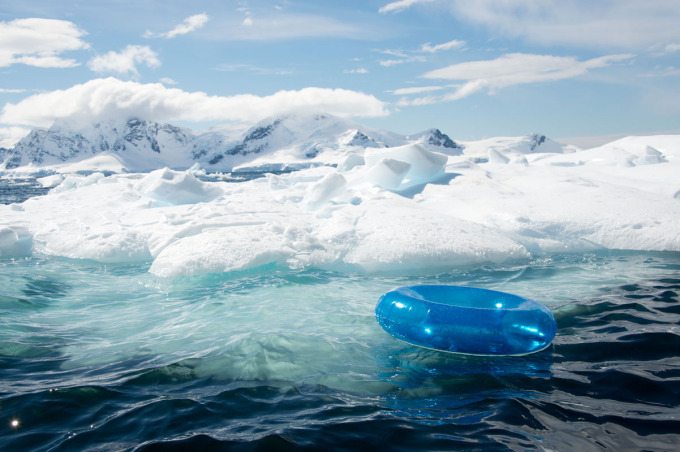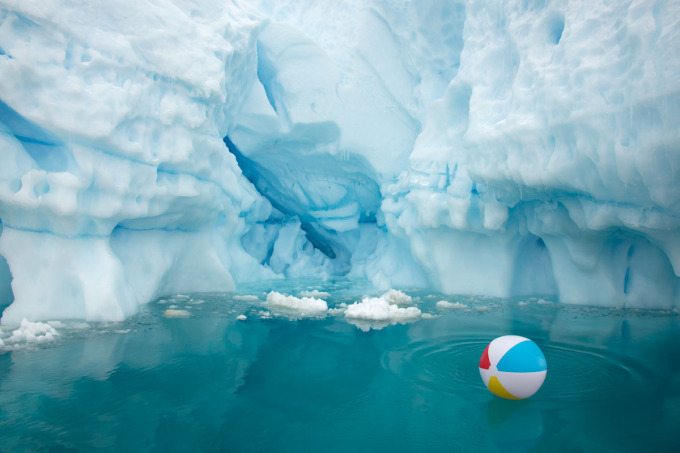All images by Gray Malin. Used with permission.
Not many people choose to venture to the Arctic–but if they did then they’d surely try to bring something to remind them of warmer times. That’s part of the influence of Gray Malin’s Antarctica: the White Continent. Gray used juxtaposition to make summery items stand out amongst the ice floes, glaciers, and the barren snow.
We talked to Gray about travelling to the Arctic, the idea and inspiration behind the project, and location scouting in the frigid cold.
Phoblographer: Tell us about how you became a photographer.
Gray: Practice. When I was young I photographed the world around me and learned the art of composition. When I discovered the dark room, I fell in love with the magic of seeing an image appear in a developing tray. As the photographic world adjusted to digital it made it easier to share my vision with others through the internet and as a result, helped me build an international audience. At the end of the day, I became a photographer because I like to make work that people want to live within and see in their home or office every single day.
Phoblographer: What gave you the idea to juxtapose these objects with the Arctic?
Gray: I had shot a body of work around the beach on six of the seven continents and wanted to figure out a way to incorporate the beach in Antarctica. Throughout the brainstorming process, I was guided by the group of National Geographic explorers and realized I was very limited to what I could actually bring in my luggage to the white continent. Therefore I began to focus on the simple elements and using them in a powerful way to create work that translated elements of the beach against the stark frozen arctic landscape.
Phoblographer: Doing a project like this requires lots of thought and planning. What was the toughest part?
Gray: Besides narrowing it down to only 80 lbs of props/equipment (see above), it was truly dangerous out in the exposed elements. This is a quote from my journal one day on the shoot:
“If you can imagine for a moment boating around by zodiac in a small bay-type area full of thousands of pieces of floating ice that are melting and falling apart every minute. Now, imagine winds and currents causing the ice to move constantly with total unpredictable results. Now imagine floating around in this ice land throwing out beach balls with a string attached and having the wind take it like a kite before it falls into a conglomerate of pack ice or lands in front of a giant iceberg. Just imagine the insanity of launching an 8 foot swan boat out into the swirling currents underneath an iceberg that resembles a gigantic archway. It was all so crazy!”
Phoblographer: Tell us about the gear used to shoot these images.
Gray: I shot with a Nikon primarily, a secondary Canon and a Go Pro to create this video.
Phoblographer: How did you scout the locations for the images?
Gray: I primarily worked with the team at National Geographic who led the expedition but they made it very clear that weather changes in a moment in Antarctica so there was no guarantee of anything whatsoever. One funny thing was they sent me a link to a Sport Illustrated article where they had photographed model Kate Upton in a few of the locations we would be visiting– and surely, the images were really helpful for scouting the landscape!


